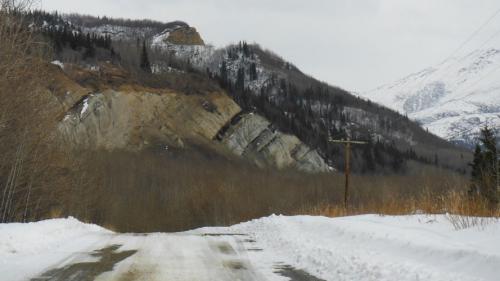The global concern over rising CO2 levels in the atmosphere and subsequent effects of climate change we are seeing particularly in the Arctic can be attributed to the burning of fossil fuels.
The burning of coal is the main contributor to electrical generation in the U. S. as well as many other places in the world.

In Alaska most of that coal comes from the Usibelli Coal Mine located 5 miles away across the George Parks Highway from the University of Florida Research Station on the Stampede Road. This is an interesting dichotomy. On one hand groundbreaking research is being conducted on what happens to tundra that is warmed by 2-3C. This research was instigated by concern over climate change. On the other hand dominating part of the view from CiPEHR is a mine ranked 24th in the U.S. for production of coal which the burning of is a major contributor to climate change.

Usibelli Coal Mine has a long history in interior Alaska.
http://www.usibelli.com/History_Story.php
Though Alaska is an energy rich state it also ranks high with its long winters and large area in energy consumption per capita.

Usibelli Coal Mine is 4th generation family owned. It’s development in the early 1900’s by Emil Usibelli and continued operation has had a significant impact on the development in interior Alaska. Fairbanks, Eielson Air Force base, Ft. Wainwright, Clear Air Force Station, the University of Alaska-Fairbanks plus many other communities rely on electricity from coal-fired generating plants. That coal comes from the Usibelli Mine.
http://www.usibelli.com/Company_customers.php


In addition, Usibelli Mine ships coal to foreign markets through the Seward Coal Terminal.

The Usibelli Mine is known as open pit mine. Coal seams are accessed by blasting and removing overlying layers (overburden). The coal is then removed. After the overburden is replaced and shaped it is then reseeded.

http://www.usibelli.com/Mine_process.php
The blasting of overburden.


Reclamation can take many years. This area at the Poker Flats Mine is the large open area you see clearly from CiPEHR. Reclamation efforts began with seeding 10 years ago. Hopefully local flora and fauna will eventually reclaim this space.



Comments